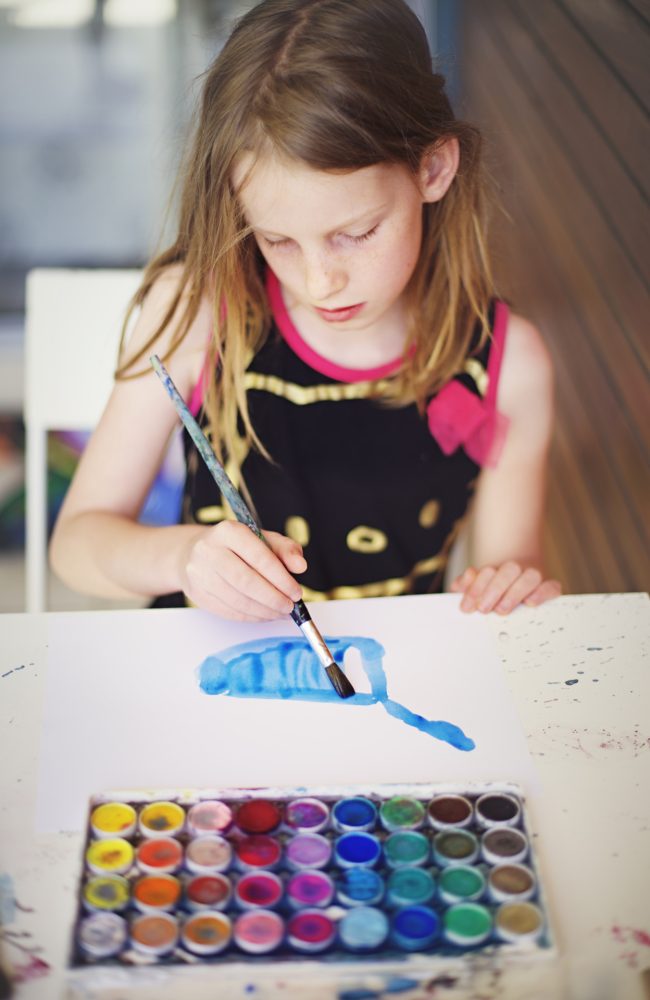Pedagogical Approaches
Homeschooling families in Quebec apply different educational approaches. Many families will change methods over time, as they adapt to the evolving interests and needs of their children.
When first taking on homeschooling, it is recommended to hold back from purchasing a lot of material specific to one approach. It is wise to give yourself time to experiment in order to discover what best suits your family.
Whether you use the traditional approach or unschooling, the Freinet method, classical education model or even an eclectic approach, there are thousands of ways to accompany your children in their learning.
You can find a wealth of information about these different learning approaches on the internet. Seasoned homeschooling parents can also be a great source of information.
For Inspiration
Seeing what other homeschooling families are doing is one of the best ways to find inspiration and ideas for ourselves.
Check out Websites and social media to discover a multitude of Facebook pages and groups, online blogs, Instagram accounts and Youtube channels.
Reading suggestions
Check out Books on homeschooling for suggestions.
Material Resources
Contact your regional representative to get more information about resources in your area and those available to borrow.
Popular Educational Approaches
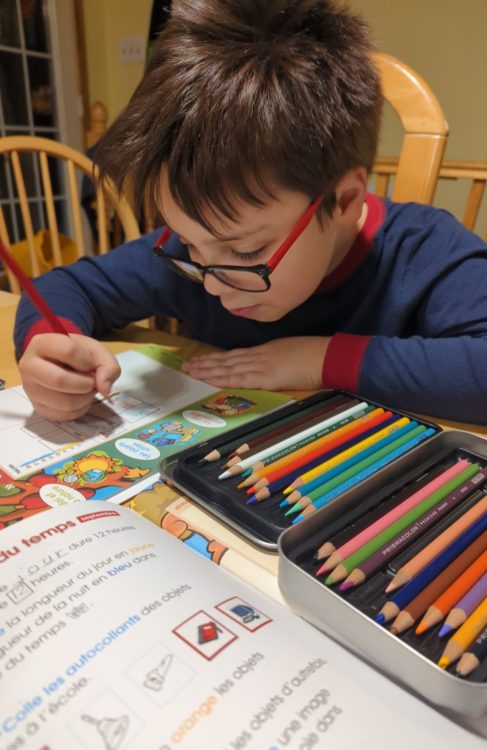
Traditional Approach
This type of pedagogy immediately brings to mind schooling as we know it, with a teacher in front of a class teaching the subject and rows of seated students listening to the instructions and concepts. But in a homeschooling context, traditional schooling refers more to the curriculum that is used.
Why would one take their children out of school only to adopt a similar approach? There are many reasons for withdrawing from school or for making the decision not to send your children to school. Being able to continue or even to start homeschooling in the traditional way provides a sense of security for some parents.
In some cases, this is the only form of teaching we know well and many want to use it because it’s what they have experienced themselves. Also, if your child has already been in the school system, they may be expecting the same approach and it may help them feel more secure.
For you, it may be easier to compare your choice to that of other parents and education professionals in your environment since the educational curriculum will be similar.
Academic Progression
You can consult the Québec Education Program or the Progression of Learning on the Ministry of Education and of Superior Education (MEES) website. They provide details on the skills and knowledge (basic knowledge) that students at school must acquire and be able to use by grade level.
Material
Organization
Your physical setup does not have to copy the traditional classroom, but should provide a suitable place for you to teach your child. If you have the desire (and opportunity) to recreate a classroom setting, go ahead!
You can set up posters, filing cabinets and task boards, all to create a routine for you and your child. The choice of furniture is obviously at your discretion as long as it is adapted to the child.
Also think about the consumable supplies you will need–such as glue, scissors, sheets and construction paper—to enrich the learning process.
Books and Textbooks
Find out about the books and textbooks used in the classroom at your child’s school level. Your school board or local school will be able to provide you with a list of books used in class for each subject.
For advice or support, you can ask AQED’s support team via email or on one of our three Facebook groups:
- Quebec Anglophone Homelearners/Homeschoolers (AQED sponsored),
- AQED Member’s Group
- AQED Facebook (open to anyone)
You can find ready-to-use curricula to fulfill your learning projects, as well as websites, blogs and forums, that can show you how to use these books, textbooks and documentaries efficiently.
Visit a bookstore, library or a university educational library to look at books and textbooks. You will then be able to order what is most suited to your child. Many publishing companies agree to an online look at their documents, which helps make an informed choice.
Check out the table of contents of chosen books to make sure that the content does reflect the traditional school curriculum. Don’t be surprised if you have to complement these books with additional materials to refine or consolidate learning.
Look For Additional Materials to Consolidate Learning
Workbooks on their own are rarely sufficient to cover all of the curriculum and to allow mastery over the material.
Counting rods or base ten blocks are examples of additional material. Working hands-on helps with mathematics comprehension. There also are a lot of educational materials online: fillable templates, interactive workbooks, checklists and reminders. It is totally possible to build your own material, which costs less and is and just as useful as paying for more expensive material, especially if you keep in mind some basic rules.
Let your creativity guide you when developing material. After all, teachers create material for their classes all of the time, so do not limit yourself just to what is published or sold. If you have the opportunity, time and energy to create your own material, it will be uniquely suited to help with your child’s motivation and desire to learn!
Rhythm
School Calendar
If you wish to match pedagogical days or holidays with the children of your district, you can check out your local school board or service center’s calendar. It isn’t mandatory to follow the school calendar, but it can make it easy to coordinate activities, meetings and outings with friends who are in school.
Schedule
You can create a schedule and follow a typical day, just like your child would have in school. This isn’t mandatory either, but it helps some children to frame their day, for example, to anticipate when French class will be over and when recess can start!
Remember that your child isn’t in a classroom with 25 other kids, and your teaching will be one-on-one (or few-on-one). The number of hours spent teaching will be different at home than at school. Often fewer hours are needed, but you will need to adapt this to your child’s rhythm.
Benefits
- Offers a structure that is familiar and well-understood by education professionals and those around you and your family. This does not mean that your experience will be all serious and stiff, but that your adventure will have structure and will reflect your personality. The Traditional Approach is like a guideline, providing you with benchmarks for your child, allowing you to adjust your child’s learning in order to acquire knowledge and consolidate it.
- Once in place, this reassuring structure allows you to enhance your child’s learning experience with games, projects, educational outings and any other complementary activity that would also be offered in school. Often you can include even more of these educational moments than a child would encounter in school, since you have fewer learners than in an ordinary classroom.
- You will be able to adjust your teachings to your child’s learning speed. It is useful to be able to explore a concept longer, if needed, or to dig deeper into concepts that have been rapidly acquired.
- Enables you to adapt the structure imposed by the government to your child’s rhythm, all while following a chronological progression of learning as expected by the Ministry of Education. It can also give way to your child’s particular interests, to stimulate other types of learning once the required concepts are seen and acquired.
You should plan on spending many hours on preparation and research with this approach, but once everything is in place, you will have a homeschooling experience that is in line with both your own pathway and your school board or service center’s.
Drawbacks
- It can sometimes be difficult to follow a premade schedule, and your planning may need regular adjustment. Remember that you are not in class and that a one-on-one teaching style will allow a faster cruising speed. You can modify or complement your curriculum to better foster the joy of learning.
- When accommodating learning disabilities, your plan could get behind-schedule. You will then have to find solutions and/or additional activities to fit your needs.
- Traditional educational materials are rarely complete on their own. It is hard to rely solely on workbooks sold in bookstores. This means it may take longer to search for curricula, even when a lot of ready-to-use material is available, to ensure your child has a rich learning experience.
- You may feel pressure to follow the same rhythm adopted by your local school, even though your child’s learning environment is not the same. This could create a less-than-positive educational experience for both you and your child.
- The cost of workbooks and recommended books can easily become overwhelming for a family, both for those with only one learner or for those with many, since it is the family budget that will cover these costs.
Resources
- http://www.guerin-editeur.qc.ca/
- http://www.cahiersng.com/
- http://www.editio.ca/
- http://www.editionsrdl.com/
- http://www.successcolaire.ca/
- http://www.serespro.com/
- http://sosprof.ca/blogue/
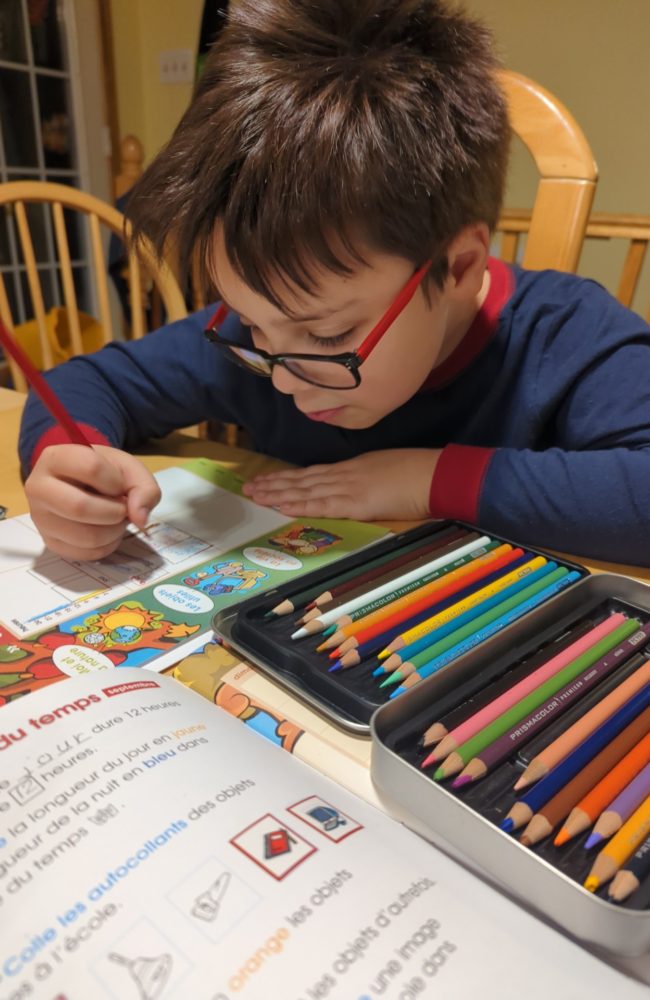
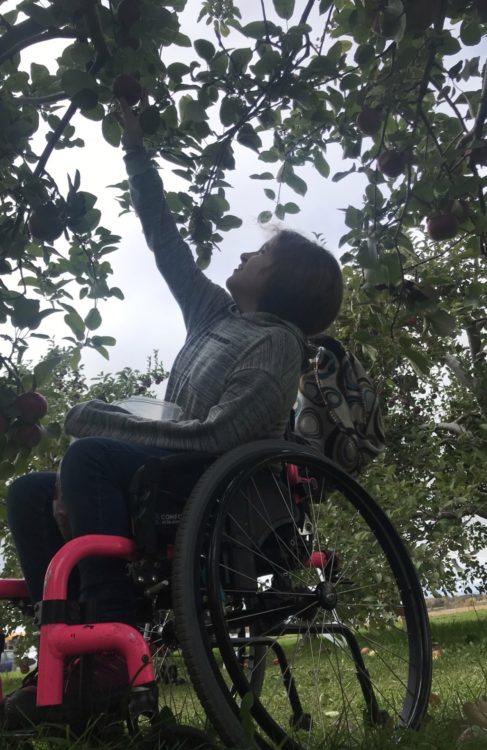
Natural Learning (Unschooling)
Learning to read, write, count, and to show interest in science, geography, and history without teaching our children? This is exactly what happens in families who support natural learning, also know as unschooling!
Natural learning is a positive approach that is based on the child’s confidence, their internal ambitions, their natural curiosity, their desire to learn, and their rhythm rather than external factors, including rewards, threats, evaluations, and forcing the child to learn predetermined concepts at specific times.
With unschooling, the child learns by following their joy, regardless of their age, their location or whether or not it is the “right moment.” This concept is supported by neuroscience : our brain develops best when we use it with enthusiasm. The basis for such an approach must begin with an emphasis on the relation between the parent and the child, one based on mutual respect. The parent must have a desire to know their child and to help them progress without judging what is important for them.
For the family, this consists of living and learning together, following up on questions and interests as they come up, and in utilizing conventional school resources upon request, if necessary. This allows the children to pursue their interests and to learn in the best way for them, either as superficially or as in depth as they wish, for as long as they choose.
For the family supporting natural learning, there is no fixed time or day for learning. The 8-to-3 model does not exist, no more than the Monday-to-Friday schedule or March break. There doesn’t need to be a structure that is fixed ahead of time, the family is present in their day-to-day life. Curious and enthusiastic children are accompanied by equally curious and enthusiastic parents. Jean-Pierre Lepri, doctorate in education and sociology, sums up the idea in these words: “To learn is to live… and vice versa.”
For the parent, natural learning is to let the child live their own experiences, but to also accompany them, guide them, attend to their needs in order to favor the vitality of these unique qualities.
Parent’s Role
In this learning environment, the parents are very present, closely involved in their child’s development. The advantage of this method is that the parent does not have to become somebody else, like a professional teacher. The child sees the adult as a mentor, a counselor, an inspiration, an initiator. The parents play an active role that manifests in different ways.
Imitation
Children imitate adults: they gravitate toward them, observe them, participate in everyday tasks. They want to know more, and sometimes, get involved. in tasks such as: sewing, playing a musical instrument, painting, reading, cooking, gardening, caring for domestic animals, making a budget, construction and renovation with tools, learning a new language, etc.
Rich and Stimulating Environment
The parent strives to supply a rich and stimulating environment for the child, whether deepen their current knowledge or interests, or to invite them to discover unknown subjects, to stimulate their five senses, or to meet new challenges. This can involve a technique known as strewing, where the parent intentionally sprinkles the child’s path with access to material, locations, or people that will enrich their day-to-day education.
Material
Strewing can extend to materials too–objects of any kind can be left within the child’s view. For example, wooden objects in different forms, an antique, a photo album, a newspaper article, a tropical fruit for snack, etc. The goal: find something that they have not seen before that will peak their curiosity. Traditional educational materials, such as books , board games, workbooks, measuring tools, etc. can equally be left for the child to find and explore.
Locations and Human Resources
Natural learning happens everywhere, not just at home! Access to different locations—the library, community center, shopping center, museums, the forest, town, etc.—and meetings with people in the community—the cashier, firefighter, mailman, garbage collector, etc.—are also great sources of information and a place for kids to ask questions.
There are also entrepreneurial opportunities when the child takes part in a parent’s business (programming, working on a farm, selling artistic creations, etc.) or at the Young Entrepreneurs Day, putting up a lemonade stand, or offering to help with chores such as cutting the grass. In addition, kids can acquire a wealth of knowledge and skills through volunteering.
Interdisciplinary Potential
With natural learning, knowledge is not partitioned into subjects, and no single discipline supersedes another. The Quebec Education Program states that the development of competencies in an interdisciplinary context favors learning.
The Example of the June Beetle
It is amazing how, from one small, simple question posed by the child, all of the spheres of knowledge can be explored. Perhaps the discovery of a brown bug in their yard encourages them to read more about that bug in a book, eventually identifying it as a June beetle. Using the computer for online research, the child practices their writing in order to find more articles on the subject. The child must then understand the text that they read in order to answer questions they have. The child may want to draw the insect or photograph it and thus integrate art into their process.
An oral presentation may follow when a guest arrives at the house unannounced; the child might want to explain how fascinating it is, the insect that they found. They will be interested in geography when they ask where this insect is from. We want to learn about history when we learn that the insect arrived by accident on a boat from Europe, and it was discovered for the first time in Canada in 1959. Observing the insect and discovering its characteristics touch on the areas of science, more specifically biology. The children may want to measure it, compile statistics on the number of June beetles discovered per day, this touching on the area of mathematics.
Each answer provokes an infinite wave of questions. Questions which may, themselves, lead to other subjects—and then another adventure begins!
Benefits
- No fighting to do exercises or homework.
- The child sees their parent as a partner rather than an adversary. The development of the parent-child relationship is at the base of this approach.
- The children take all the credit and pride for what they learn. ” I learned to read ” rather than ” Ms. Bridget (or mom!) taught me to read. ” This builds their self-confidence.
- Allowing the children to follow their dreams, their curiosity, and their interests is an excellent way to favor their research skills, as well as the critical and analytical skills necessary to find a job that suits them.
- They come to know themselves very well.
- Fosters creativity and divergent thinking, given that the children are not encouraged day after day to complete exercises with only one right answer.
- The children feel a great freedom and power over how their life is organized. They learn to make decisions and to develop an entrepreneurial spirit, rather than simply following instructions;
- There is no separation or difference between learning and life. The children see all moments as learning occasions, rather than associate a time, material, or specific location to do so;
- Because the children choose the moment and the subject that they learn, learning is seen as something pleasant.
Drawbacks
- In order for natural learning to be experienced well in a family, the parent must be ready to let go and to really trust their child.
- Parents will face judgment from people who do not understand what natural learning truly is.
- Some people confuse natural learning and negligence. ” You don’t do anything? ” ” You don’t do math?”
In The Eyes of Others
The more we talk about it, the more the richness of this approach will be understood. Ordinary life is full of extraordinary learning occasions! Your child’s educational path is different, yes, but equally among the most personalized, where their objectives, their needs, and their rhythm are respected for their overall well-being.
This favors the development of their full potential, allows them to acquire general and specific competencies essential for today’s world, and prepares them to be ready for the world of tomorrow. Did you know that even some big American universities, such as Harvard, are marketing directly to parents who follow natural learning? They want to have these students in their establishments, as these students are generally highly motivated and creative.
Note:
- You must know how to let go, trust your child, and to not pluck “the flower that is growing”. It is difficult sometimes to not know where child stands (compared to their peers). Do they know how to read? Do they know how to count? What did they take from their experience this morning? What did he take from the informational book he read?
- Many concepts are learned from conversations, ones that may seem irrelevant to us.
- Period of de-schooling: to appreciate this approach, the parent and the child must pass through a period of questioning, of de-schooling. “But my children love doing workbooks!” That is possible. However they may have also integrated the fact that is the ONLY way to learn.
- We often say that, in general, a child needs as many months to de-school as they spent years in class. This being said, each child is different, and with each parent taking on natural learning with a different rhythm and intensity, it would be best to observe your child. Wait for them to have a taste of freedom, let them get bored with it, and after, they will learn to make better use of their time.
- “But my children don’t do anything during the day!” Avoid valuing certain activities over others. Learning is not a hierarchy. Playing Transformers, observing the clouds, or watching Minecraft videos on YouTube are all activities equally as valuable as reading an encyclopedia.
- Comparison: we often use age to compare one child’s knowledge set to another’s, basing our judgements on what skills and knowledge traditionally-schooled children of the same age should have. “He is 10 years old, he should know that by now!”
- Don’t try to do too much: natural learning must not become a steady stream of activities proposed by the parent. Silence and boredom can prove to be very formative. Overactivity may prevent beautiful discoveries for the child.
- Learn to be flexible: you had planned an outing to the library today, but your oldest has just found a family photo album and is asking about the uniform of your great uncle Hector, who went to war. Why not change your plans and postpone the outing until tomorrow?
SOURCES
CÔTÉ, Geneviève et Isabelle Jean, Marilyn Rowe, Evelyne Dumas. L’apprentissage naturel, une boîte à outils pour le monde de demain, Mémoire présenté pour la Commission parlementaire de la culture et de l’éducation pour le collectif « Parents favorisant l’apprentissage naturel chez les enfants » concernant le projet de loi 144 modifiant la Loi sur l’instruction publique, Août 2017. En ligne : http://www.assnat.qc.ca/Media/Process.aspx?MediaId=ANQ.Vigie.Bll.Documen…
Thanks to Geneviève Côté, Suzanne Lagacé, Eva Ketelsen and Patrick Riley
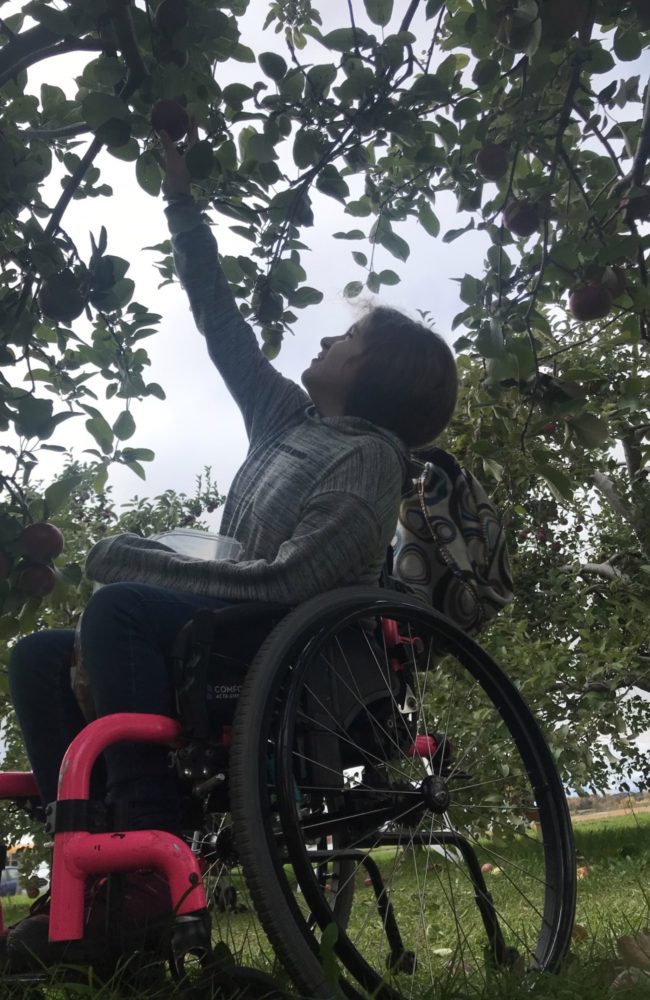
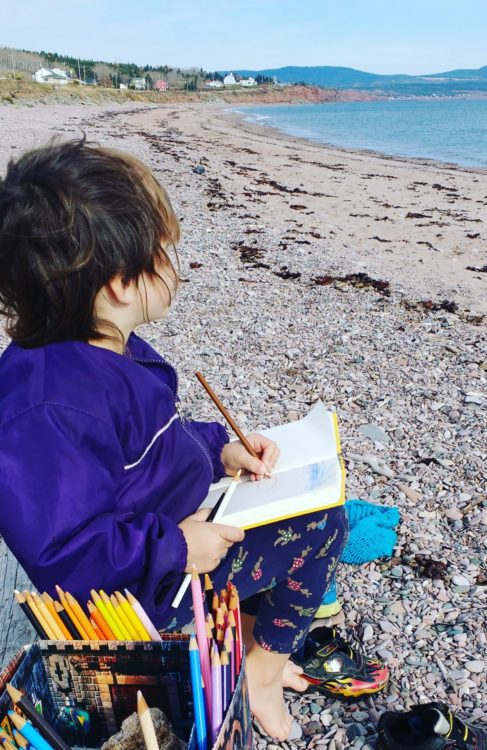
Charlotte Mason Method
Charlotte Mason was a famous British teacher who dedicated her life to improving the quality of children’s education. The philosophy of this approach is based on the principle that the child is a whole person from birth. The approach is therefore imbued with respect for the child, while promoting discipline. It affirms that education is an atmosphere, a discipline, and a life.
For Charlotte Mason, children are not receptacles to be filled, but rather beings who hunger for discovery, and what they learn is just as important as how they do it.
If you like to browse the great writings of famous writers, great musicians and famous painters, to get to know their home countries, the life paths that shaped their destiny, as well as the Bible, scouting, and deep learning through diverse subjects, the Charlotte Mason approach provides an ideal curriculum.
Academic progression
Children must be able to reinvest their knowledge through writing, speaking or any other means so that they can achieve a synthesis to be able to appropriate the material and explain it in their own words. Here, we take the time to assimilate the knowledge and explain it orally before moving on to writing.
In this approach, an emphasis is placed on the child’s behaviour. They must learn to control their behaviour in order to become and remain balanced with respect to their values and abilities. As the child grows, the lessons will increase in duration, diversity and depth.
Spelling and grammar are studied with literary texts and not word lists. First of all, once again, they are learned orally. Writing is done by copying sentences from a literary text. The child writes only one sentence a day, but in their most beautiful calligraphy. This should be conducive to concentration and not discourage them from the task given the short duration of this learning experience.
Art plays an enormous role in this educational approach. The stories of the great creators are recounted by the child and then they slowly move towards creation of their own. Moreover, according to Charlotte Mason, narration plays an important role in the child’s ability to share their knowledge after having studied key notions, for all subjects and concepts. Even dictation should be done orally and corrected immediately in order to validate knowledge immediately and not over a longer period.
Listening to music by famous great musicians is also very important.
For nature observation, a drawing book is recommended to document discoveries. This is how scientific research begins.
Poetry also has a special place here! Not to be taught, but rather to be shared and recognized as an important imprint of the past. Shakespeare thus appears regularly in the educational curriculum. The Bible is also important.
Geography and history are taught in such a way as to know not only the places but also the human beings who participated in it. It is emphasized that the life course and destiny of the famous people studied were shaped by the places they lived in, in early life and thereafter.
Moreover, scouting is very important in this educational approach. In fact, Charlotte Mason incorporated it into the compulsory educational curriculum in 1905!
Material
The most important contribution of this educational approach is its use of so-called “living” books instead of school material, which is described as rigid.
It is considered important to use such books in all subjects of study, or at least in as many as possible, to provide the child with an education that does not infantilize them and that provides them with rich and varied knowledge.
Searching for Material and Living Books
- Living books means literary books and not learning manuals, unless the latter are clearly superior in providing knowledge;
- Be prepared to buy, or borrow from the library, a wide variety of books in order to promote a variety and multitude of learning opportunities for the child;
- Visit websites on this educational method in order to understand the extent and variety of the program to follow, consult forums, etc.
Charlotte Mason’s method is often associated with Montessori and Waldorf because they share many points of similarity and some of the material used is common across the three approaches.
Rhythm
Educational Planning
It is essential to plan for the time and energy to be invested.
- Plan to explore a diversity of subjects and set aside time for oral feedback on each notion learned;
- Plan a schedule with short lessons and activities to foster the child’s attention and motivation;
- The curriculum favors oral knowledge at the beginning with a shift towards writing later;
- The number of subjects and the notions to be covered is greater than in a traditional curriculum. They are also studied more thoroughly, so time and duration should be considered in your planning.
Schedule
- As the curriculum, while flexible, is more diversified and concentrated in content than the so-called more traditional method, you will have to plan to explore a variety of knowledge and concepts;
- Activities and lessons are short, so they should be planned accordingly;
- Signing up for scouting could be an interesting addition and free up a few hours in your schedule while forming an integral part of the educational curriculum.
Benefits
- A varied curriculum, rich in knowledge, that does not infantilize your child, but teaches them things effectively and concretely. The knowledge is transmitted in short lessons in order to foster attentiveness and a diversity of knowledge.
- Are the Bible, music, art and its famous creators, as well as learning geography from a completely different angle, important elements for you? Do you think that your child could benefit from a richer and more diversified education? In that case, look no further!
- This approach will give your child more time to acquire oral knowledge before easing into writing. Writing is introduced gradually so each word and each notion can be memorized, to promote solid foundations as opposed to accumulating information without making any connections.
- One sentence a day, handwritten in your child’s most beautiful calligraphy? Isn’t that fantastic for your child who doesn’t seem to be as strongly interested in writing as would normally be expected for their age in the current education system?
- If scouting also seems an important dimension for you and your child, this approach could fulfill all the aspects of your expectations from an educational program.
Drawbacks
- This approach offers a different way of educating children and may require significant adaptation on your part. It may seem to you that the curriculum is too heavy and too diverse for you and your child.
- The Bible, scouting, music, art, and geography are subjects that this curriculum covers in depth. This takes more time and energy because it is not really possible to do an overview.
- Using a number of diverse and in-depth books can signify higher costs. If literature is not one of your strengths, you will have to spend more time on it, because it is essentially the starting point for this educational approach.
- You will need to be available to receive your child’s oral feedback on their learning and to continuously support and accompany them through a wide variety of short workshops.
- This approach advocates not infantilizing children. It may be that your perception of what and how things should be taught is not consistent with what is proposed by this method.
Resources
Books
Andreola, Karen, “A Charlotte Mason Companion: Personal Reflections on the Gentle Art of Learning”. ISBN # 9781889209029.
Cooper, Elaine, “When Children Love to Learn: A Practical Application Of Charlotte Mason’s Philosophy For Today”. ISBN # 9781581342598.
Mason, Charlotte, “Charlotte Mason’s Original Homeschooling Series”. ISBN # 9781889209005.
Sites
Charlotte Mason Institute: https://charlottemasoninstitute.org/
Practical Pages: https://practicalpages.wordpress.com/homeschool/charlotte-mason/
Simply Charlotte Mason: https://simplycharlottemason.com/
Sage Parnassus: https://sageparnassus.com
https://www.facebook.com/groups/simplycm/?ref=br_rs
https://www.facebook.com/groups/charlottemasonhomeschoolers/?ref=br_rs
Charlotte Mason Material
Maple Tree Publications : http://mapletreepublications.ca
Thanks to : Annie Shirley Horne, Anik Lambert, Geneviève Côté, Suzanne Lagacé, Eva Ketelsen and Patrick Riley.
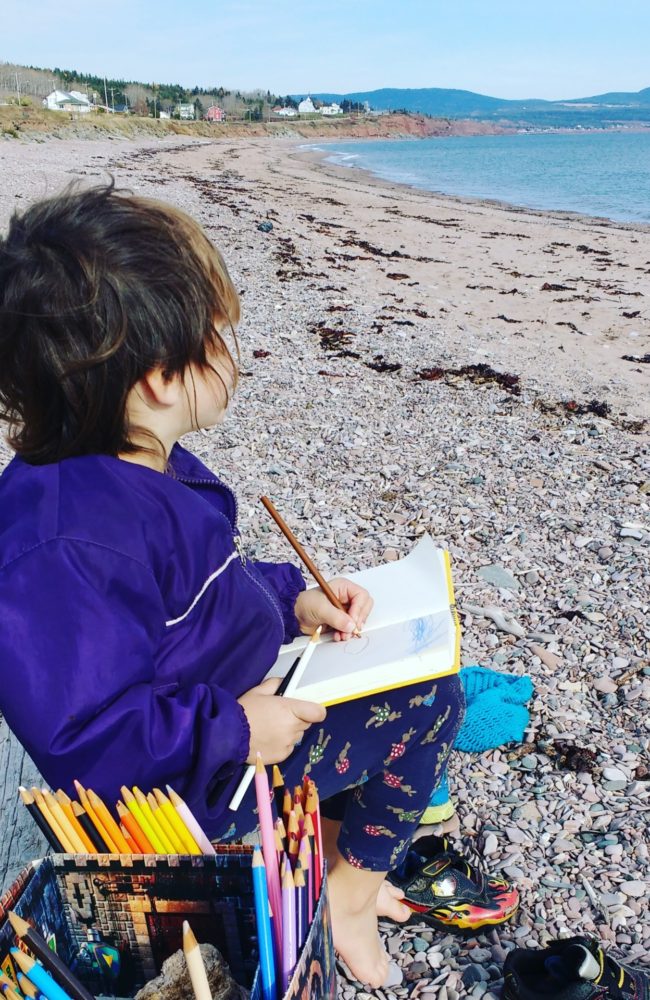
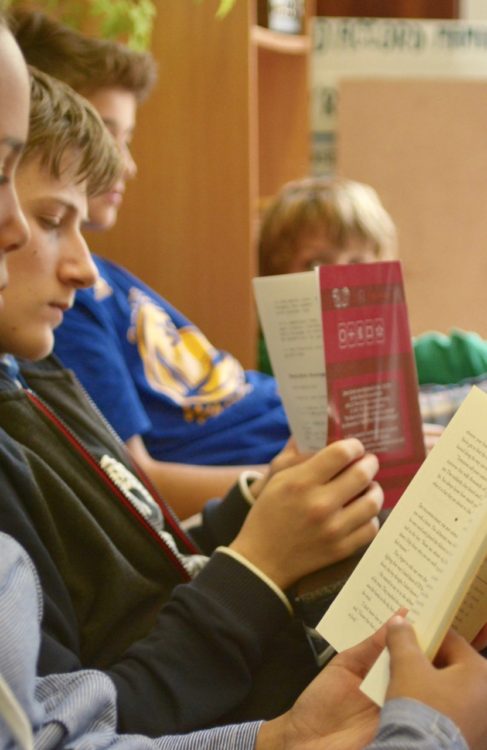
Classical Education
This educational method originates from the middle ages, but has influenced many contemporary schools of thoughts. For example, in 1999, Susan Wise Bauer and Jessie Wise published The Well-Trained Mind, a book that offers homeschooling families a curriculum based on the Trivium.
Even if this method is rarely mentioned in Quebec, it is referenced again and again. In the United States, for example, many online courses use it as a model.
Curriculum
Classical education emphasizes written and spoken language. Course content is delivered through reading within a historical context that is discussed in each class. Literature is therefore organized chronologically, by periods of history.
The classes of classical pedagogy are art, ancient languages, health and sports, history and literature, math and science, and writing and grammar. The preparation and methodology prepare students for exams.
The Curriculum is Divided Into Three Parts:
Part One: Grammar
- Provides the child with facts;
- Rooted in the five senses;
- At a young age, the child is like a sponge and can absorb a phenomenal amount of information.
Part Two: Dialectic
- Teaches about logic arguments;
- Teaches about the “mechanics” of thought and analysis.
Part Three: Rhetoric
- Corresponds with high school in Quebec;
- Leads children to express themselves as they have acquired all the competencies to do so;
- Applies the grammar and dialectic in order to convince the audience.
Method
This method incorporates teaching logic and rhetoric, which means that the parent-educator (the teacher) leads classes with questions and discussions. Grammar includes learning linguistic competencies, including reading and the mechanics of writing. Studying Latin and ancient Greek reinforces learning grammar and language in a very rich and complete way.
Benefits
This educational method, though much lesser known than some others in Quebec, has a lot to offer.
- A solid base in reading and writing;
- An approach that follows historical periods of human history;
- Well-defined steps, established according to what the child must learn to master his education;
- A solid structure from the first year through the end of secondary;
- Several informative websites to consult.
If you and your child need structure and would like to learn language, literature, and ancient languages, and if learning through periods of human history interests you, this pedagogy could be a good fit.
Drawbacks
- The curriculum could be too hard and repetitive for some people. It requires a lot of focus for memorization, narration, and dictation;
- It demands a large amount of work for the parent;
- The importance of learning ancient languages such as Latin and Greek could seem less pertinent for some people;
- The approach, based on a good understanding of history, could be difficult for a child who has little or no interest in that subject;
- There could be gaps in certain subjects if the parent doesn’t make a conscious effort to supplement;
- Technology is taught to older kids, which isn’t always realistic in today’s world;
- The emphasis on classic work/books could limit the point of view to the one of another time in history: some texts contain values that, by today’s standards, would be considered sexist or racist. The parent is encouraged to add more modern readings and lead discussions about those subjects.
Evidently, this pedagogy requires a real dedication from the parent to provide the child with a rich and complete education through all the child’s learning, from primary to secondary level.
Reading Suggestion
At its foundation, this pedagogy dates from the middle ages. The popularity of this educational method takes origin in the publication, in 1962, of a 54-books series : The Great Books of the Western World.
Resources
For those who are interested, the website The Well-Trained Mind explains the philosophy, the methodology including a list of annotated books classified by age and subject, and demystifies the theory. You can also find an academy, online courses, and social networking groups on the subject.
Thanks to Anik Lambert, Annie Shirley Horne, Geneviève Côté, Patrick Riley, Eva Ketelsen and Suzanne Lagacé
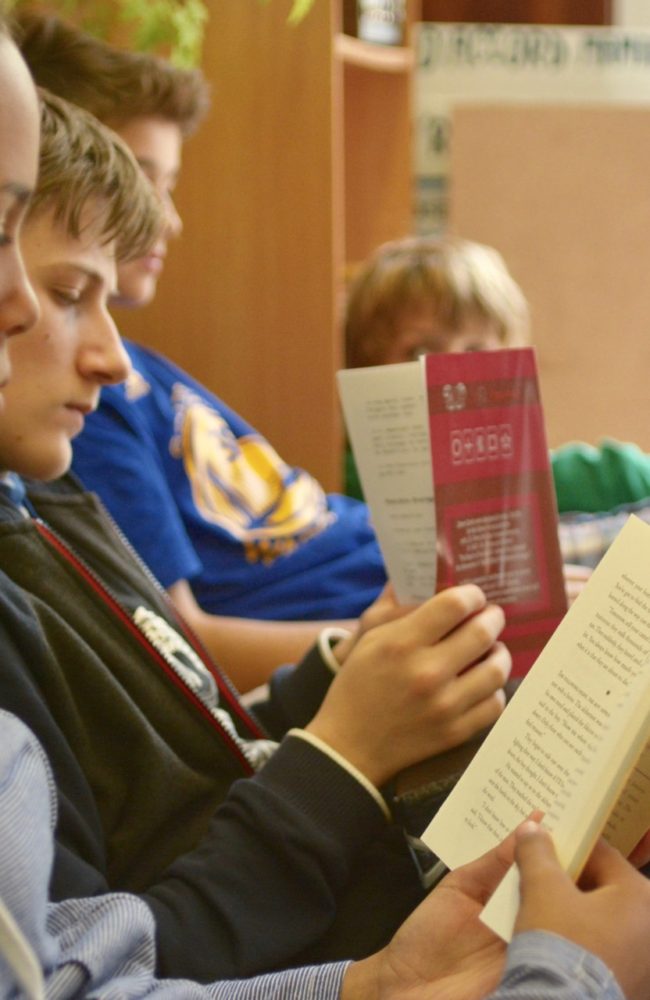
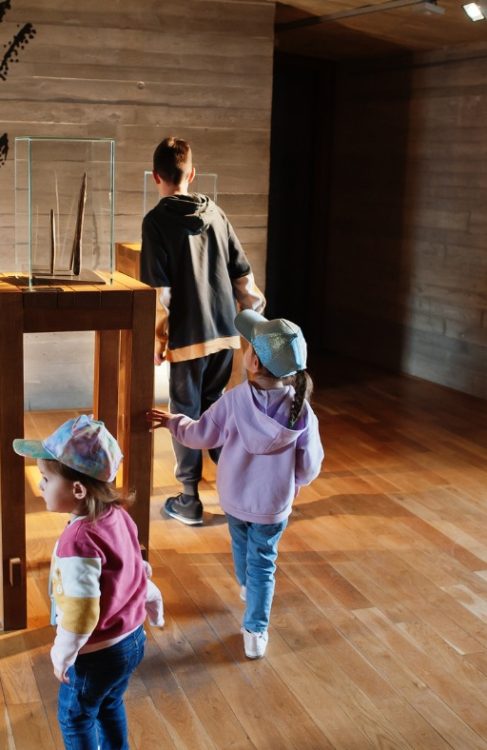
Eclectic Approach
What is it? It is a wonderful blend of pedagogies!
You know, sometimes we look over the various pedagogies offered, and unfortunately, nothing honestly and truly seems to be a good fit. At times it is possible to leave aside one part of a pedagogy without sacrificing its essence, but when there are multiple aspects that we aren’t happy with, we lose a lot of the pedagogy in question. We may find ourselves unable to feel confident.
And so, here enters the eclectic pedagogy! It allows us to reach into each of the educational approaches offered to fulfill our desires, and bring together the best characteristics for the development and future of our child. Yes, you can do that! You may, following your child’s choices and interests, adapt the pedagogy and the way to approach the school curriculum in order to live an enriching and diversified experience. Nothing is set in stone and nothing is mandatory, but only to follow your own path!
The possibilities are infinite, changeable, and adaptable!
Educational Path
With this approach, you will have the freedom to borrow the tricks and good points of selected pedagogies in order to create an individualized approach for your child. You do not have to follow a specific curriculum; all that will allow your child to acquire knowledge and deepen that knowledge is allowed. Your planning is yours. Your curriculum may respect one or many pedagogies at a time. You can blend pedagogies in order to facilitate learning or even to make it more complex if needed. Your way of doing things, your curriculum, your vision will be unique!
Method
- Research the different pedagogies that interest you, if you wish:
- Take note of the aspects of each pedagogy that interest you.
- Gather books, documents, material, applications, pertinent software.
- Look on Pinterest, Google, websites, Facebook groups and pages, etc.
- Make a list of material to provide/gather:
- Make a list based on needs for projects, models, themes, material, applications, digital software, games, etc.
- Make a list of workbooks, worksheets, and manipulatives that you want to get.
- Make a list of material to create and calculate the costs.
- Plan outings and educational activities:
- Make a list of museums, possible walks, various visits, activities in your neighborhood, your town, your area, etc.
- Make a list of sporting, scientific, and cultural activities offered in your area.
Rhythm
Make a Schedule
- Depending on your method, you may establish a schedule based on a traditional school setting, or adjust it entirely on the pace of life that you want for your school year.
- Make your schedule based around activities chosen, goals, etc.
- The type of schedule will be a reflection of your personality and that of your child.
- You may have a very structured schedule or no established schedule at all, but rather a list of activities. You can also give your child choices for them to make their own schedule with or without your help.
Make a Calendar
- The choice to respect a calendar is yours.
- You can have a calendar and expected accomplishments for each day, week, or month.
- You can also have no planning in this sense.
- There are no constraints or obligations regarding study times or how they should go. This depends solely on your situation, your wishes, and your expectations.
Benefits
- The beauty of this pedagogy is the possibility to use any interesting concept from other pedagogies to allow your child to enjoy themself to the fullest.
- You use the material that suits you. You can choose to make models, projects, or animations for the achievement of learning. You can use Montessori material or refer to literature as indicated in Charlotte Mason pedagogy.
- You can choose to have themes or not. You can use workbooks, worksheets, applications, websites and software for all subjects or not. Some ideas may be seen in a certain way, and others differently again. It is possible to integrate play in order to learn.
- The child can choose. You may also suggest, innovate, plan, organize, delegate, and create a pedagogy that perfectly suits your child. You organize your days how you wish.
Drawbacks
- Freedom can bring headaches when the time comes to define the competencies seen in order to fill the portfolio. The infinite possibilities can also be scary, since there are no specific labels. Not following a particular curriculum may bring about a feeling of uncertainty surrounding the value of your undertaking. You must learn to trust yourself.
- Trying to respect your child as they learn, all the while offering a large number of pedagogies, may require a lot of research, preparation, and additional costs.
- It may be difficult to navigate from one pedagogy to another and to do it alone. Those who adopt approaches in their entirety are more respectful of the fundamental criterion, and you may not find the overall benefit and support if you do not follow through all the suggested steps of the method in question. After all, it is difficult to guide someone who shares only half the method to apply to arrive at one given result.
Thanks to Anik Lambert, Annie Shirley Horne, Geneviève Côté, Patrick Riley, Eva Ketelsen and Suzanne Lagacé.
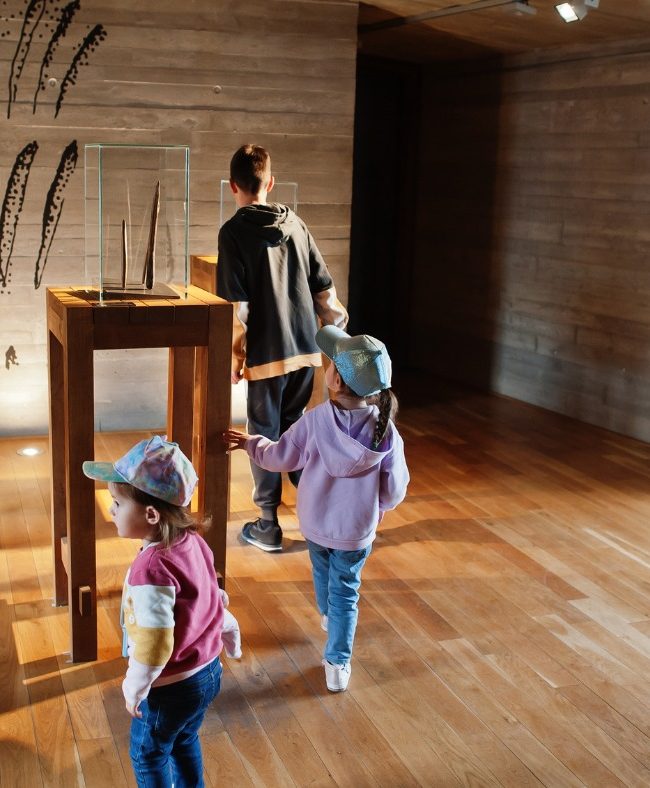
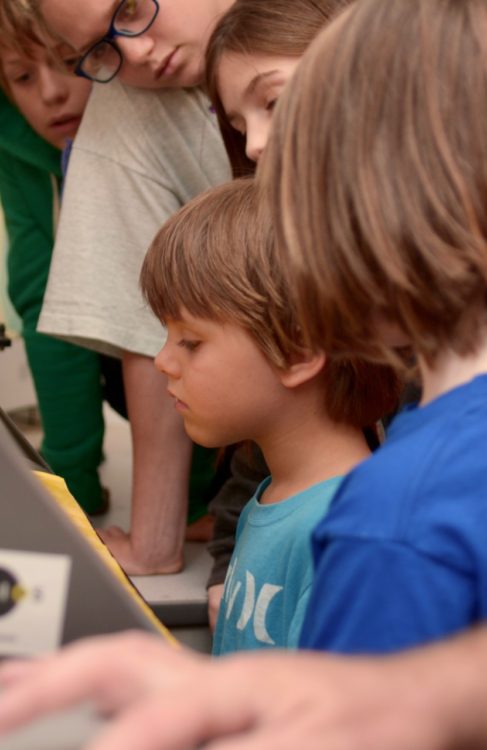
Freinet Method
What is it? It is a wonderful blend of pedagogies!
You know, sometimes we look over the various pedagogies offered, and unfortunately, nothing honestly and truly seems to be a good fit. At times it is possible to leave aside one part of a pedagogy without sacrificing its essence, but when there are multiple aspects that we aren’t happy with, we lose a lot of the pedagogy in question. We may find ourselves unable to feel confident.
And so, here enters the eclectic pedagogy! It allows us to reach into each of the educational approaches offered to fulfill our desires, and bring together the best characteristics for the development and future of our child. Yes, you can do that! You may, following your child’s choices and interests, adapt the pedagogy and the way to approach the school curriculum in order to live an enriching and diversified experience. Nothing is set in stone and nothing is mandatory, but only to follow your own path!
The possibilities are infinite, changeable, and adaptable!
Educational Path
With this approach, you will have the freedom to borrow the tricks and good points of selected pedagogies in order to create an individualized approach for your child. You do not have to follow a specific curriculum; all that will allow your child to acquire knowledge and deepen that knowledge is allowed. Your planning is yours. Your curriculum may respect one or many pedagogies at a time. You can blend pedagogies in order to facilitate learning or even to make it more complex if needed. Your way of doing things, your curriculum, your vision will be unique!
Method
- Research the different pedagogies that interest you, if you wish:
- Take note of the aspects of each pedagogy that interest you.
- Gather books, documents, material, applications, pertinent software.
- Look on Pinterest, Google, websites, Facebook groups and pages, etc.
- Make a list of material to provide/gather:
- Make a list based on needs for projects, models, themes, material, applications, digital software, games, etc.
- Make a list of workbooks, worksheets, and manipulatives that you want to get.
- Make a list of material to create and calculate the costs.
- Plan outings and educational activities:
- Make a list of museums, possible walks, various visits, activities in your neighborhood, your town, your area, etc.
- Make a list of sporting, scientific, and cultural activities offered in your area.
Rhythm
Make a Schedule
- Depending on your method, you may establish a schedule based on a traditional school setting, or adjust it entirely on the pace of life that you want for your school year.
- Make your schedule based around activities chosen, goals, etc.
- The type of schedule will be a reflection of your personality and that of your child.
- You may have a very structured schedule or no established schedule at all, but rather a list of activities. You can also give your child choices for them to make their own schedule with or without your help.
Make a Calendar
- The choice to respect a calendar is yours.
- You can have a calendar and expected accomplishments for each day, week, or month.
- You can also have no planning in this sense.
- There are no constraints or obligations regarding study times or how they should go. This depends solely on your situation, your wishes, and your expectations.
Benefits
- The beauty of this pedagogy is the possibility to use any interesting concept from other pedagogies to allow your child to enjoy themself to the fullest.
- You use the material that suits you. You can choose to make models, projects, or animations for the achievement of learning. You can use Montessori material or refer to literature as indicated in Charlotte Mason pedagogy.
- You can choose to have themes or not. You can use workbooks, worksheets, applications, websites and software for all subjects or not. Some ideas may be seen in a certain way, and others differently again. It is possible to integrate play in order to learn.
- The child can choose. You may also suggest, innovate, plan, organize, delegate, and create a pedagogy that perfectly suits your child. You organize your days how you wish.
Drawbacks
- Freedom can bring headaches when the time comes to define the competencies seen in order to fill the portfolio. The infinite possibilities can also be scary, since there are no specific labels. Not following a particular curriculum may bring about a feeling of uncertainty surrounding the value of your undertaking. You must learn to trust yourself.
- Trying to respect your child as they learn, all the while offering a large number of pedagogies, may require a lot of research, preparation, and additional costs.
- It may be difficult to navigate from one pedagogy to another and to do it alone. Those who adopt approaches in their entirety are more respectful of the fundamental criterion, and you may not find the overall benefit and support if you do not follow through all the suggested steps of the method in question. After all, it is difficult to guide someone who shares only half the method to apply to arrive at one given result.
Thanks to Anik Lambert, Annie Shirley Horne, Geneviève Côté, Patrick Riley, Eva Ketelsen and Suzanne Lagacé.
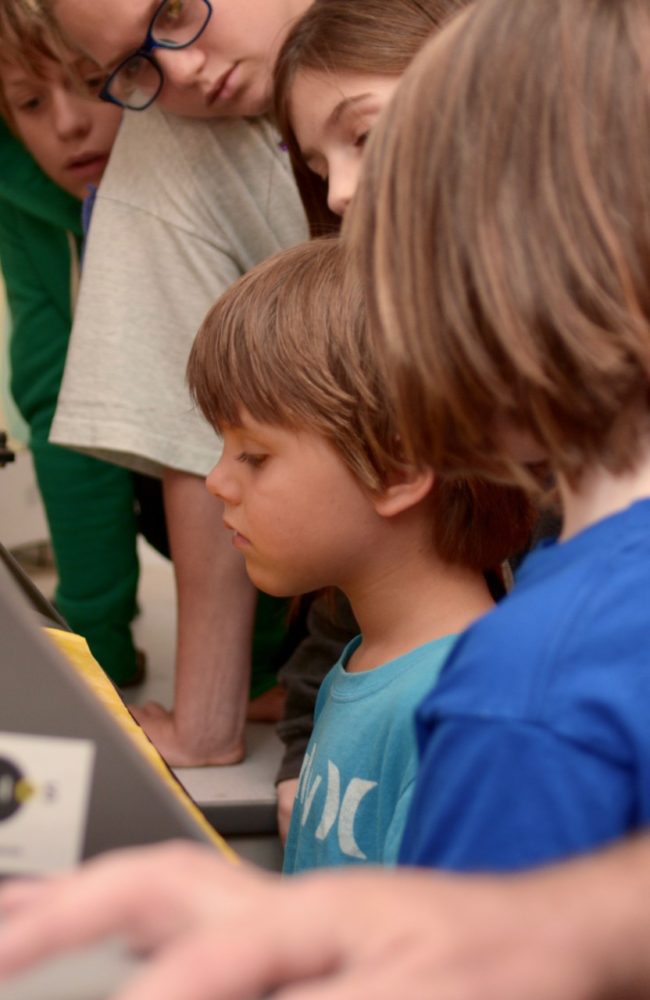
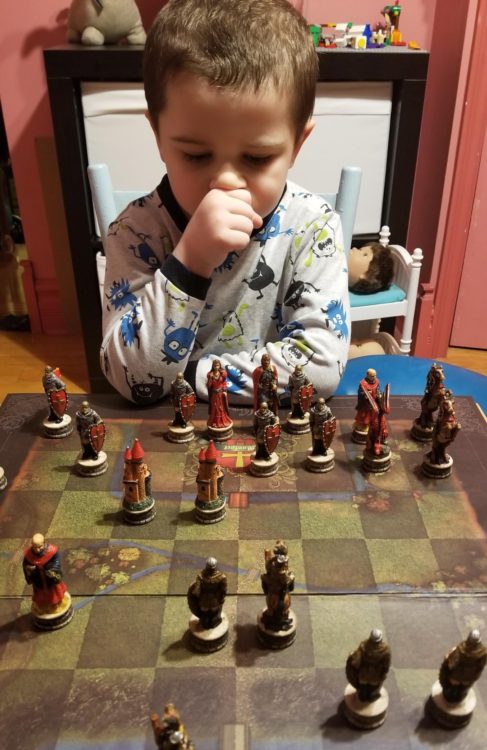
Gameschooling
Learning only through play? Is this a realistic educational choice? If you have already observed your child, you will have noticed that they love to play. So, wouldn’t learning theoretic notions and practices by playing be the ideal framework for your child?
Have you noticed the number of games that exist on the market? There is something for everyone. There is no game that does not encourage learning! All games, even the most entertaining and those that seem harmless will serve as a springboard for your child to learn.
Your child will surely be able to learn notions of math, French, science, geography, programming, ethics, etc. And if it was possible to offer this type of learning to your child? Are you on board?
Academic progression
- You can consult the Quebec Education Program on the Ministry’s website. You may thus follow along with your child’s learning in relation to what is offered at school, or simply reassure yourself in regards to your educational choice if you wish to offer your child this type of education.
- You can choose a game by notion, by subject, or by area of study. Many notions can be seen by one game, so you do not have to have as many games as you have notions to study. You can also just play!
- It is important to note the notions covered, the experimentations and what was learned, in order to be able to track things for the portfolio.
Material
Think about games from your childhood: skipping rope, hopscotch, tag, hide and seek, treasure hunting, card games, chess, checkers, battleship, tic-tac-toe, hangman, snakes and ladders, etc.
Let your imagination run wild, and invent games. Create, discuss, plan, and plan with your child! Free play time is also a fabulous learning opportunity.
Certain board games are offered on the market to target certain areas of learning precisely or to
consolidate them. Ask at your local bookstore or your favorite game store; the employees will be
pleased to assist you. There are also a number of gaming sites that allow you to chat with the creator in order to have more information.
There is also a large variety of games for computers, tablets, gaming consoles, and other electronic products which may facilitate learning if you would like.
Examples of Skills Practiced
- Hangman: list of vocabulary words
- Snakes and ladders: numbers, counting, calculations, learning rules and how to play board games
- Skipping rope: memorization of vocabulary words, rhymes, sports, etc.
- Chess: strategy, memorization, probabilities, calculations, etc.
- Battleship: strategy, calculations, letters, numbers,
- Card games: calculations, numbers, odds and evens, understanding instructions and application, sharing, teamwork (ethics), etc.
- Scrabble: letters, calculations, using a dictionary, memorization, reading and lecture et argumentation
- Tag: colours, words, letters, numbers, themes, etc.
- Tell me: creativity game, make up a story, beginning, middle, story ending, creating a shared story, etc.
Advantages
- Learning by having fun! Play all day and learn mandatory notions.
- Great continuity of their childhood
- The child can choose. You may also suggest, innovate, plan, organize, delegate, and create a pedagogy that suits your child perfectly.
- You organize your days as you wish.
Drawbacks
- May be difficult to define the competencies seen in order to complete the portfolio.
- The infinite possibilities can cause uncertainty, given that there are no specific points.
- The reality of not following a specific curriculum may instill a feeling of worry in regards to the value of our choice. You have to learn to have faith in yourself.
- May require a lot of research, preparation, and costs to offer an interesting variety of games.
Thanks to Anik Lambert, Annie Shirley Horne, Geneviève Côté, Patrick Riley and Suzanne Lagacé
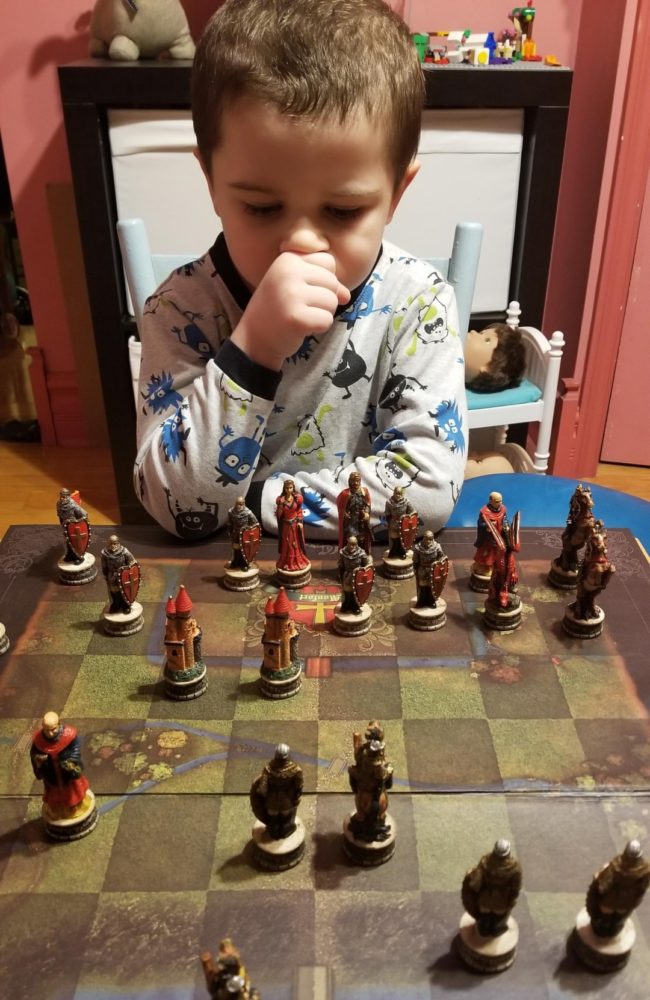
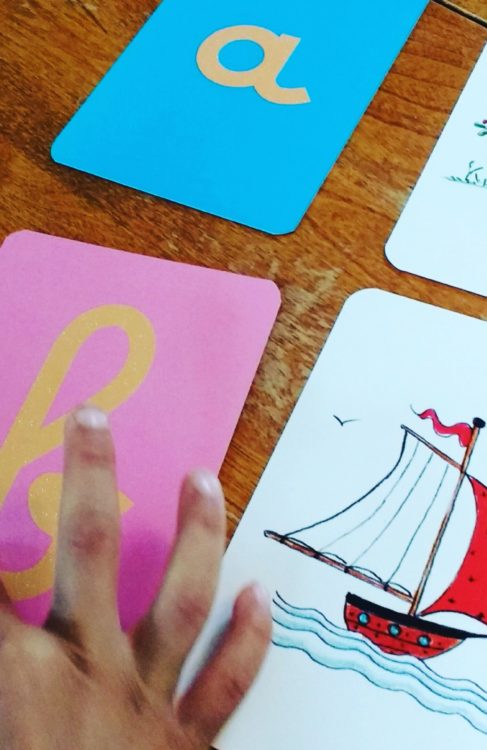
Montessori Method
Maria Montessori developed this pedagogical approach in 1907. There are more and more follows of this educational approach, which has proved its worth in many respects.
Maria Montessori was a doctor whose career led her to study children for around 50 years. She based her practice on groups of children with learning difficulties, eventually extending her program to all children. It was through observing children that she came to propose her model.
The Montessori method builds on children’s natural curiosity by offering them materials and an alternative setting to understand the concepts they are learning by making them their own.
According to Maria Montessori, as children have an absorbing capacity, it is essential to have an environment prepared to offer them the possibility to become complete human beings with the capacity to cope with life.
The child will be able to master their freedom!
Academic progression
Learning starts with the child themself, who builds their own conception of the world. The curriculum adapts to the child’s pace. Children can learn at their own pace without being offended by being slower or faster: education is individualized.
The goal is to help children acquire a high degree of autonomy. The progression of this program is not rigid, but rather serves as a guide to your child’s progress. Calm, order and kindness are the foundations of this pedagogy.
There are certain phases in your child’s life that are more conducive to learning. We suggest you refer to them to help you understand the progression.
Materials
The manipulatives appeal to the child’s senses and the Montessori philosophy is based on the “teach me to do it myself” principle. The materials are designed to motivate the child and encourage exploration and discovery, sowing the seeds of knowledge that will emerge when the time is right.
There will be no bright colors in your room or the space devoted to this form of learning. The preferred colors are sober and natural.
Looking For Materials
Montessouri materials are increasingly plentiful on the market, but you may have to turn to specialist bookshops or online sites.
Asking for advice on forums could be a good way of guiding you through the essential purchases and their specific uses. These materials are magnificent, but can be expensive. Check for sales on the internet and on classified ads, or consider making your own!
Order and Classification of Materials
The materials should be arranged in a simple and natural way, to leave room for learning: this is part of the learning process.
The arrangement of materials can have a positive impact on the development of your child’s knowledge and interest. There are some superb practical examples on the websites of how to place and classify different objects to encourage your child to explore.
Don’t forget that over and above the materials and teaching methods, it’s your patience, encouragement and availability that will make this teaching approach a winner. Over and over intellectual knowledge, the Montessouri method greatly encourages the development of the child in all their splendor.
Advantages
- Favors autonomy, self-confidence and the natural curiosity of the child
- Is based on respect, listening to and understanding a child’s potential and unique traits
- Effective appropriation and integration of concepts through touch, exploration and discovery of the world around them using the 5 senses
- Use of concrete materials
- Supervision that respects the child’s development, without inducing fear of failure or comparisons
- Offers positive learning guided by the desire to learn and motivation
Drawbacks
- Sometimes difficult to find materials
- Cost of the materials can be high. A lot of material comes from outside Canada with delivery costs added to the cost of the material and the need to allow time for delivery
- Can be costly in terms of time and energy if the material is self-made, as the colours and composition of the material is very specific
A good analysis of your needs in terms of teaching materials and the associated costs becomes important when you want to take advantage of this teaching approach.
Resources
Reading
http://montessori74.free.fr/bibliographie.htm https://decouvrir-montessori.com/livres-comprendre-montessori/ https://www.lexpress.fr/styles/enfant/livre-montessori-notre-selection-pour-comprendre-la-methode_1760610.html
http://ecole-vivante.com/pedagogie-montessori.html
Online
https://decouvrir-montessori.com/# http://www.alternative-montessori.com/par-ou-commencer-montessori/
http://www.montessori.quebec/education/
https://blog-montessori.com/ http://montessorichezlespetitsloups.e-monsite.com/pages/ressources-pedagogiques/
Educational Material
http://montessorimateriel.org/index.html
http://atelier-montessori.com/
http://www.lecoinmontessori.com/category/materiel-montessori/ https://liberte-pedagogique.com/liste-de-materiels-educatifs-montessori/ https://montessorimaispasque.com/tag/liste-objets-lecture-montessori/ https://enconfianceavecmontessori.com/
Thanks to : Anik Lambert, Annie Shirley Horne, Geneviève Côté, Patrick Riley et Suzanne Lagacé.
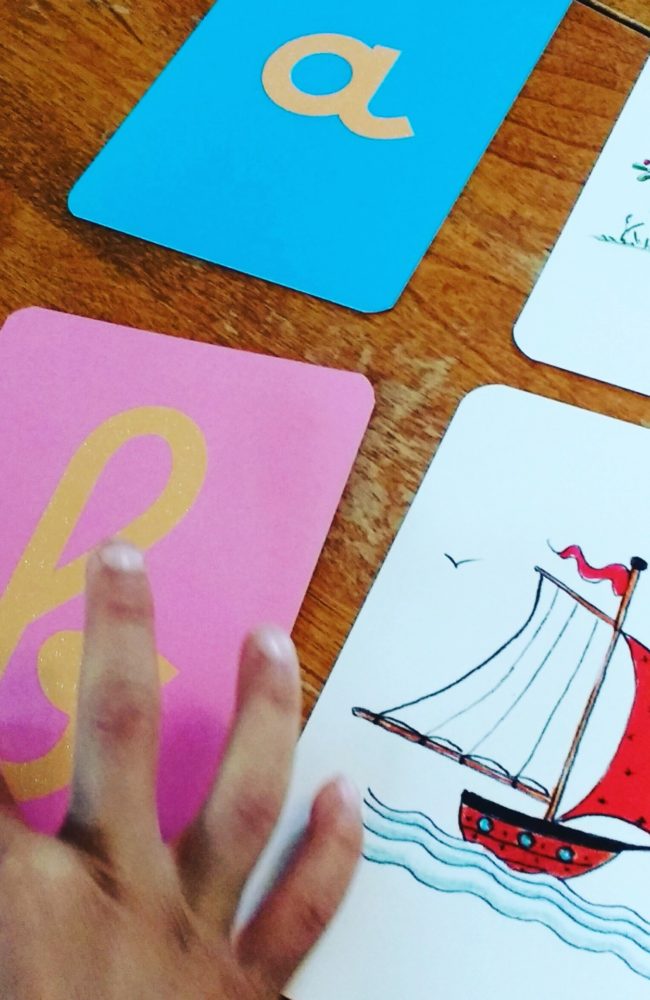
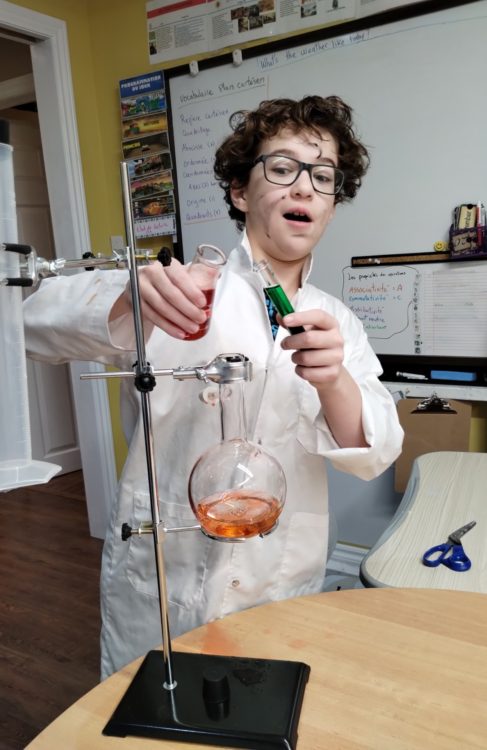
Project-Based Learning
Project-Based Learning
Learning through projects puts the child back at the heart of their own learning. The child is involved throughout the project. They learn by building their understanding of notions to see themselves, calling upon their creativity. You, therefore, have the role of guide. Whether it be sitting around the table, doing crafts, or playing a role in a theatrical piece, your child explores the subjects being studied.
It is also a way to put learning into a real-life framework. As the notions are explored in a realistic and concrete way, the child will have an important understanding of what is learned, which will allow them to more easily re-invest this knowledge into daily life.
It is therefore an educational approach that allows the child to at times be a researcher, producer, and director in their education. It will also be them who, at the end of the day, will have memorized and understood the notions in an interesting way. The child will remember, because they are directly involved and actively taking part.
The child’s learning rhythm will also be respected, which will facilitate their motivation to learn. This approach allows for fun while accumulating an important wealth of knowledge. A fun and playful way to cover the traditional notions without having the impression that the tasks at hand are arduous and complex!
Academic Progression
Learning through projects allows the child to learn about more than one notion during any given project. This educational approach allows you to cover many notions and subjects at a time based on the project.
- Research the projects to complete, either with the child or alone, in order to target their areas of interest. There are many sites, forums, and books that can help guide your research.
- Print out a summary of the project (for the portfolio).
- Keep a sheet or notebook for taking notes during the project (child’s interest, motivation, investment in the project).
- Have a blank outline on hand for the list of materials for the project.
- For each project, define which competencies will be seen based on the targeted grade level.
- You can consult the Québec Education Program on the Ministry’s website to determine the learning outcomes for your child’s educational level.
- Keep in mind that each project will include reading, reading comprehension, and work methods. You will therefore have many projects to choose from for inclusion in the portfolio.
- Integrate reading, reading comprehension and work methodology.
Material
- Gather and evaluate the cost of all required material in order to achieve the project. You may already have all the items you need on hand. If not, you may sometimes modify the project without losing the efficiency of what is to be learned. If this is not the case, you will need to make a list and go shopping to purchase those items needed. This will also allow you to examine other notions such as calculations!
- It is important to have all the necessary material in order for project-based learning to be a positive and pleasant experience from the beginning.
Some Suggestions or Projects:
- Act out a story.
- Perform a work of theater.
- Using Legos to build a representation of your favorite story.
- Create a model of your favorite cartoon.
- Create a cartoon, story, newspaper, book, and learn about the different steps.
- Create a model to represent the history of the Native Americans.
- Create a drawing to represent reading comprehension of a story.
- Have a treasure hunt by solving mathematical equations.
- Learn about nature by observing and analyzing our environment
- Use video games to reinforce learning—for example, using Minecraft to construct historical monuments, study different biomes and landscapes, talk about minerals, etc.
- Plan the week’s menu— organize the meals, make a shopping list, estimate costs, go to the grocery store, and prepare the food.
- The kitchen is a fantastic laboratory for exploring science and math, not to mention English (or French) through reading and reading comprehension.
Method
Discuss and plan the project with your child
- This is an important step to evaluate the child’s expectations as well as their interest in the project.
- This is a great opportunity to help foster a work ethic that will follow your child throughout their life.
- Planning materials and ideas in advance will help your learning experience to be a rich one.
Putting the Project Into Action
- Your child’s pleasure will guide you in regards to how deeply you can explore the notions to be seen. You are not the director, but rather an active participant in this way of learning.
Reviewing the Project After the Fact
- Look back on the experience with your child. Note or have the child note the notions learned.
Begin Planning a New Project
- Discuss ideas for a new project with your child, either one stemming from your previous project or a totally new one based on your child’s interests.
Benefits
- May give or give back the desire to learn to a child resistant to formal school learning.
- As the child is at the center of their learning, they are no longer a spectator. They are an active member taking part in their learning life.
- Since motivation is the driving factor behind any desire to learn, this approach allows motivation to take up all the space it wants!
- It is pertinent to English, French, science, math, social science, history, and any other subject to be studied.
- Allows the child to explore and enrich the notions in depth.
Drawbacks
- Requires many hours of planning and time to organize your material and work schedule.
- Requires a lot of flexibility and the capacity to manage the unexpected in order to complete projects that may be longer or shorter than you had planned, based on your child’s interest.
- Requires the ability to see speed bumps as learning opportunities nonetheless, and to turn them into a positive experience anyway.
- Turnkey projects can become expensive.
- It might be difficult at times to recognize which competencies may be seen throughout the project to satisfy the ministry requirements.
Thanks to Anik Lambert, Annie Shirley Horne, Geneviève Côté, Patrick Riley and Suzanne Lagacé.
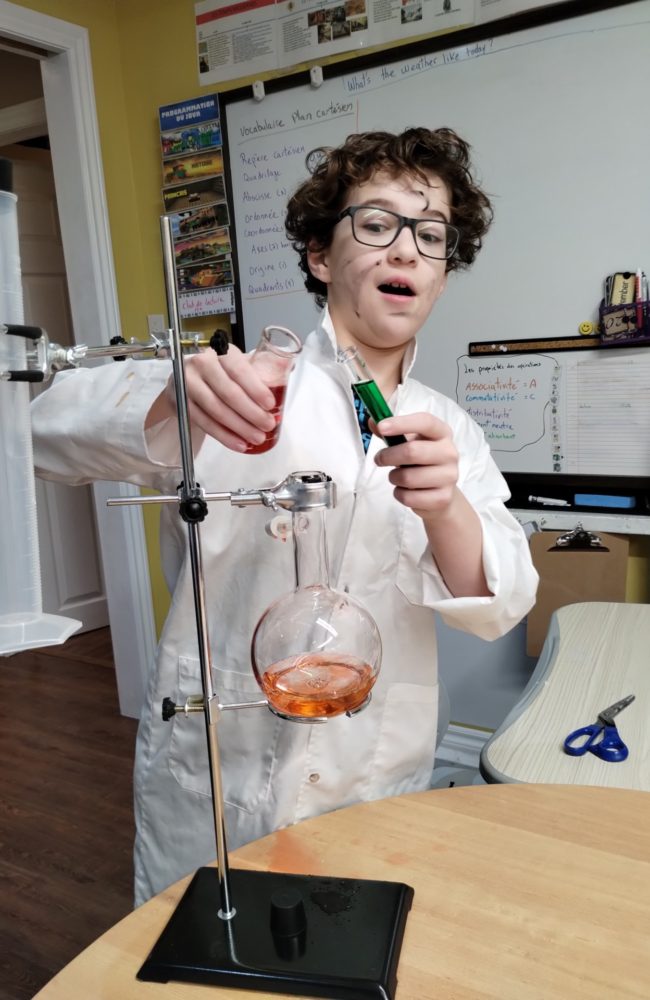
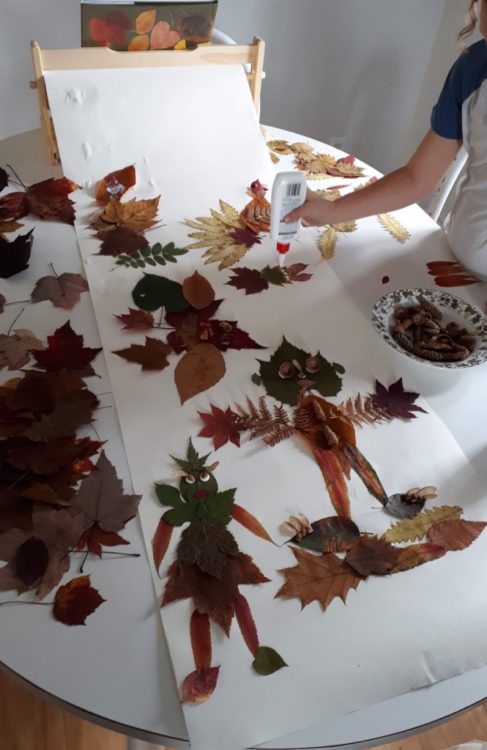
Theme-Based Learning
This efficient method consolidates learning under one initial common subject.
This can help you research learning activities, because they will be based on a chosen theme, and will revolve around that theme. It’s easy and fun for the child to make connections in their learning, while at the same time, diving more deeply into topics that may otherwise be skimmed over.
Each of the topics can be used to explore all of the subjects—science, math, French, English and everything else!
Educational Path
You can consult the Québec Education Program on the ministry’s website to determine the learning outcomes for your child’s educational level.
Material
Choice of Themes and Activities
Choose the themes that you would like to address with your child. A theme should, ideally, stay the same for a week or two so that you can do plenty of activities related to the theme.
It’s wise to not spend too much time on any one subject, in order to maintain the child’s interest.
The number of themes used in a school year will vary, depending on the child’s interest and the nature of the subject.
Depending on the length of time planned for exploring the theme, and the child’s educational level and interest, you can plan both basic and more complex activities in order to take advantage of the topic. You can choose the theme based on the concepts or subjects you want to study, or start with your theme of choice and then figure out which concepts you will address through the theme.
Check out documentaries, digital apps, stories, fables, history, art and cookbooks. Once you’ve started your research, you’ll find that the hardest decision you’ll have to make is which activities to choose
Examples of Themes
- Apples: calculations, colors, cooking, art, picking and making, where they come from, the varieties, the growth of an apple tree, etc.
- Halloween : history, how it is celebrated in different countries, etc.
- Christmas: making decorations, arts, history, how it is celebrated in different countries, customs and legends, cooking, etc.
- Planets: solar system, distance, the tides, history, different beliefs, artistic production, etc.
- Wildlife: observation, identification, calculations, documentaries, readings, visits, outings etc.
- Art history: artists, creations, dates and periods of creations, artistic productions, etc.
- Trip around the world: cooking, customs, religions, sports, flags, population density, distance from our country to the others, email or letter exchange, artistic projects, continents, countries, provinces, oceans, etc.
- Plants: planting, where they come from, identification and classification, edible plants, documentaries, books, herbarium, cooking, etc.
- Sports: origins, countries, nutrition, olympic games, watching documentaries, reading, artistic productions, vitamins, minerals, calculations, participation, etc.
- Nutrition: learning dietary needs, cooking, artistic production, Canadian food guide, role playing to imitate a restaurant, countries, regulations, etc.
There are so many ways to address each theme. Everything depends on the angle you choose.
Rhythm
- Once your themes and activities are chosen, it would be important to plan a schedule. This will help you not only to prepare the necessary material, but also to complete the activities.
- Allow for additional time in order to let your child go deeper into and consolidate their studies.
Method
- Once your themes and material are chosen: experiment, discuss and listen to your child.
- Having extra activities ready to go would be useful if your child wants to go farther than you planned.
- Take photos of your work! It is also a wonderful memory. You will probably do a bunch of activities, and it will be important (and nice!) to be able to have a record and to think back on the wonderful adventures you had as a family.
Benefits
- Facilitates the process at the start of homeschooling: all the subjects and notions will be covered in a playful and fun way, with good planning.
- Allows children to learn at their own pace and make connections without feeling the heaviness of the task.
- Offers a wide-range of effective activities.
- Allows you to go deep into certain concepts and ensure their mastery.
- Allows you to target your child’s areas of interest thanks to freedom of choice.
- Provides some security as to the course of your school year, once the planning is done.
Drawbacks
- Research for themes may seem laborious when you have to make a choice in order to address certain competencies or skills.
- What you had planned may differ from what will happen during the course of a project. This may require some regular adjustment, either in relation to the child’s interest or the actual duration of the selected activities.
- This approach also requires material. Whether it be in relation to the cost and the energy you will have, you have to plan time to prepare, as well as additional costs if you must purchase material.
Thanks to Anik Lambert, Annie Shirley Horne, Geneviève Côté, Patrick Riley and Suzanne Lagacé.
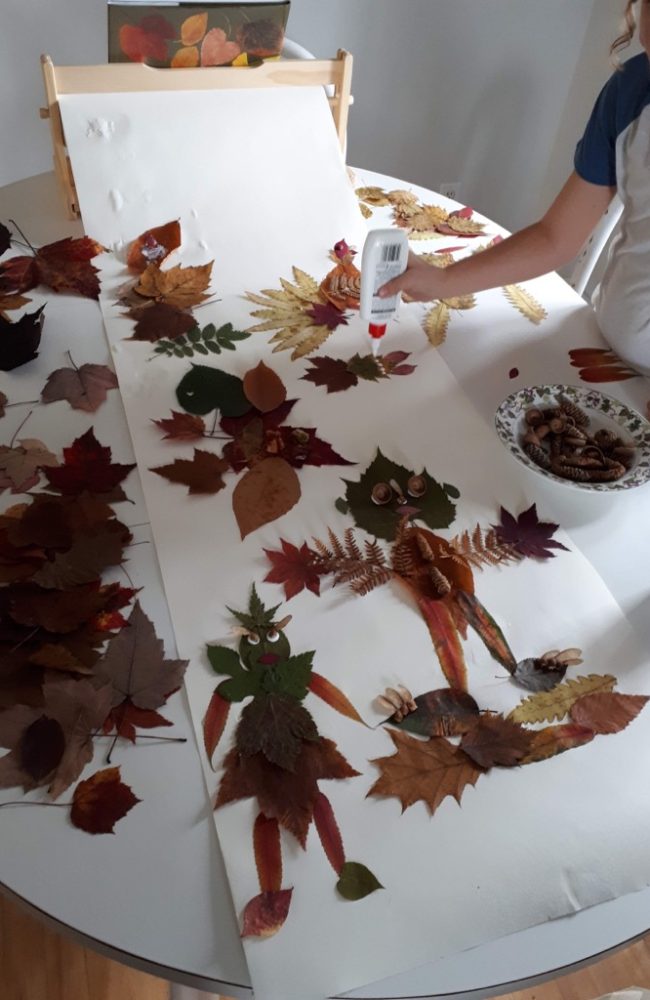
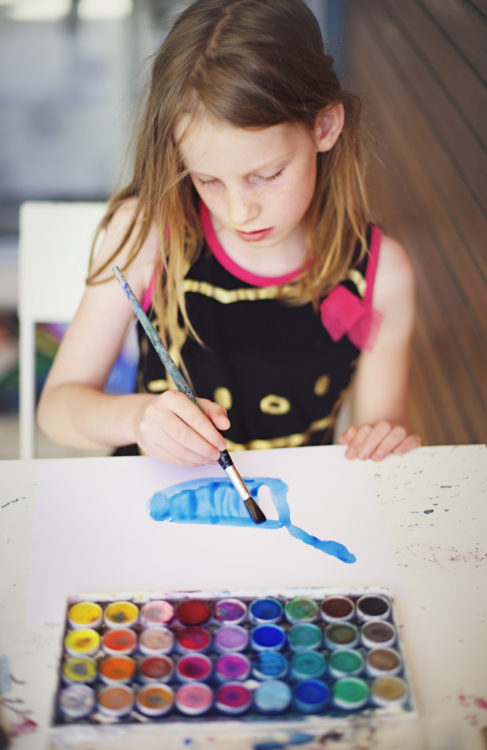
Waldorf Approach
Theme-Based Learning
This efficient method consolidates learning under one initial common subject.
This can help you research learning activities, because they will be based on a chosen theme, and will revolve around that theme. It’s easy and fun for the child to make connections in their learning, while at the same time, diving more deeply into topics that may otherwise be skimmed over.
Each of the topics can be used to explore all of the subjects—science, math, French, English and everything else!
Educational Path
You can consult the Québec Education Program on the ministry’s website to determine the learning outcomes for your child’s educational level.
Material
Choice of Themes and Activities
Choose the themes that you would like to address with your child. A theme should, ideally, stay the same for a week or two so that you can do plenty of activities related to the theme.
It’s wise to not spend too much time on any one subject, in order to maintain the child’s interest.
The number of themes used in a school year will vary, depending on the child’s interest and the nature of the subject.
Depending on the length of time planned for exploring the theme, and the child’s educational level and interest, you can plan both basic and more complex activities in order to take advantage of the topic. You can choose the theme based on the concepts or subjects you want to study, or start with your theme of choice and then figure out which concepts you will address through the theme.
Check out documentaries, digital apps, stories, fables, history, art and cookbooks. Once you’ve started your research, you’ll find that the hardest decision you’ll have to make is which activities to choose
Examples of Themes
- Apples: calculations, colors, cooking, art, picking and making, where they come from, the varieties, the growth of an apple tree, etc.
- Halloween : history, how it is celebrated in different countries, etc.
- Christmas: making decorations, arts, history, how it is celebrated in different countries, customs and legends, cooking, etc.
- Planets: solar system, distance, the tides, history, different beliefs, artistic production, etc.
- Wildlife: observation, identification, calculations, documentaries, readings, visits, outings etc.
- Art history: artists, creations, dates and periods of creations, artistic productions, etc.
- Trip around the world: cooking, customs, religions, sports, flags, population density, distance from our country to the others, email or letter exchange, artistic projects, continents, countries, provinces, oceans, etc.
- Plants: planting, where they come from, identification and classification, edible plants, documentaries, books, herbarium, cooking, etc.
- Sports: origins, countries, nutrition, olympic games, watching documentaries, reading, artistic productions, vitamins, minerals, calculations, participation, etc.
- Nutrition: learning dietary needs, cooking, artistic production, Canadian food guide, role playing to imitate a restaurant, countries, regulations, etc.
There are so many ways to address each theme. Everything depends on the angle you choose.
Rhythm
- Once your themes and activities are chosen, it would be important to plan a schedule. This will help you not only to prepare the necessary material, but also to complete the activities.
- Allow for additional time in order to let your child go deeper into and consolidate their studies.
Method
- Once your themes and material are chosen: experiment, discuss and listen to your child.
- Having extra activities ready to go would be useful if your child wants to go farther than you planned.
- Take photos of your work! It is also a wonderful memory. You will probably do a bunch of activities, and it will be important (and nice!) to be able to have a record and to think back on the wonderful adventures you had as a family.
Benefits
- Facilitates the process at the start of homeschooling: all the subjects and notions will be covered in a playful and fun way, with good planning.
- Allows children to learn at their own pace and make connections without feeling the heaviness of the task.
- Offers a wide-range of effective activities.
- Allows you to go deep into certain concepts and ensure their mastery.
- Allows you to target your child’s areas of interest thanks to freedom of choice.
- Provides some security as to the course of your school year, once the planning is done.
Drawbacks
- Research for themes may seem laborious when you have to make a choice in order to address certain competencies or skills.
- What you had planned may differ from what will happen during the course of a project. This may require some regular adjustment, either in relation to the child’s interest or the actual duration of the selected activities.
- This approach also requires material. Whether it be in relation to the cost and the energy you will have, you have to plan time to prepare, as well as additional costs if you must purchase material.
Thanks to Anik Lambert, Annie Shirley Horne, Geneviève Côté, Patrick Riley and Suzanne Lagacé.
